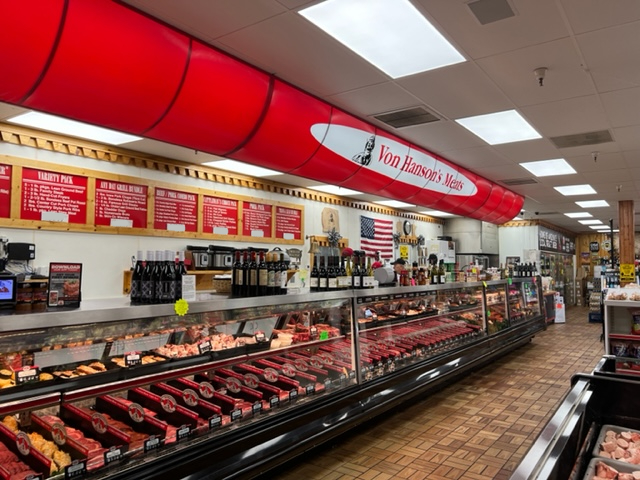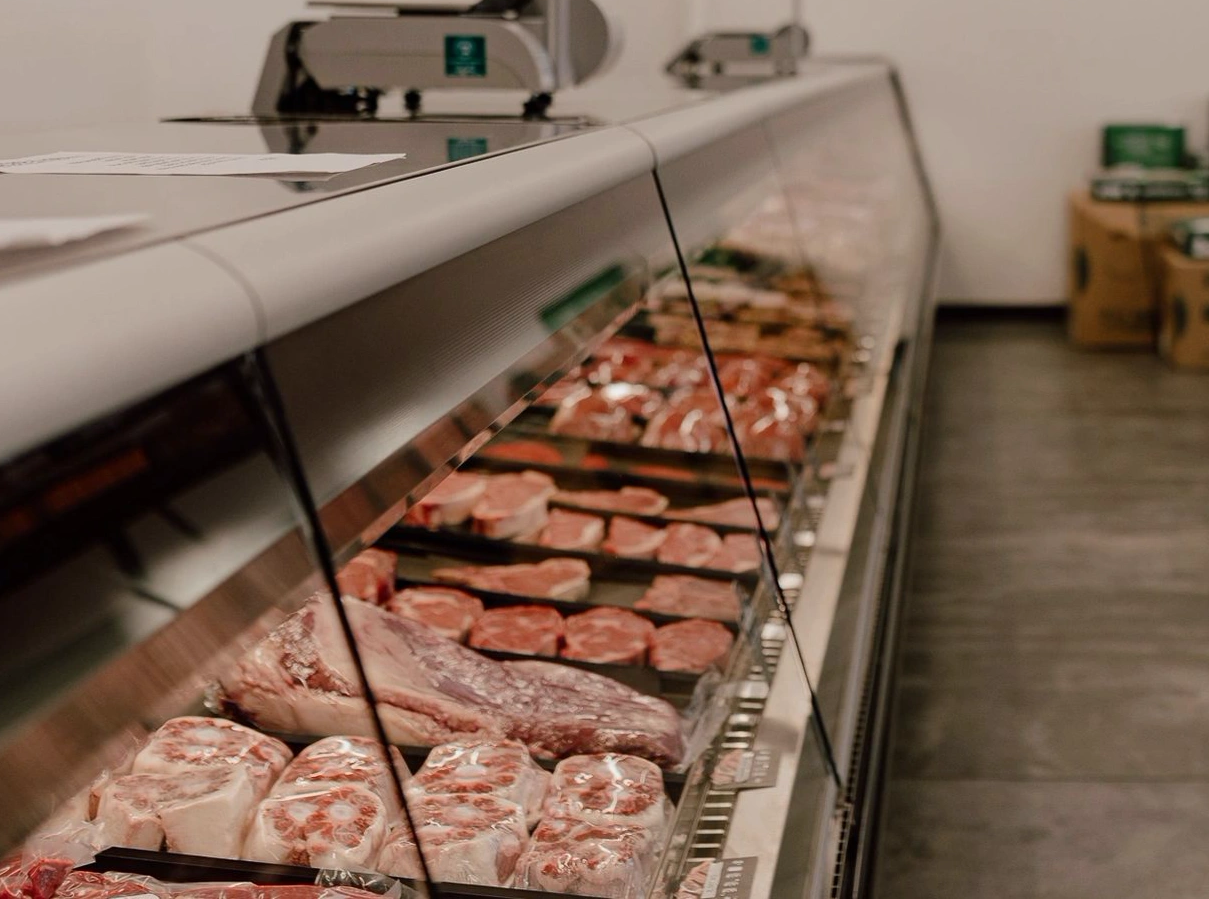Bagley Farms Meat Market Edwardsville IL: Your Best Location for Neighborhood Meat Option
Bagley Farms Meat Market Edwardsville IL: Your Best Location for Neighborhood Meat Option
Blog Article
Discover the Art of the Butcher's Cut in a Modern Meat Market
In the ever-evolving landscape of modern meat markets, the butcher's cut has actually transcended its standard roots, combining age-old workmanship with modern practices. What really establishes the modern butcher apart is their ability to build a much deeper link between customers and the beginnings of their meat.
Evolution of Butchery Strategies
The evolution of butchery strategies shows a rich tapestry of advancement and adaptation driven by innovations in innovation, adjustments in consumer demand, and a deeper understanding of meat scientific research. Historically, butchery was a craft passed down with generations, with approaches developed over centuries to optimize yield and flavor. Nonetheless, the industrial change ushered in automation, changing traditional methods and making it possible for large-scale processing.
The mid-20th century saw butchery techniques even more fine-tuned by clinical understandings into muscle biology and meat aging, improving both inflammation and taste. Technologies like vacuum packaging and refrigeration expanded product shelf-life, enabling butchers to diversify offerings and enhance top quality control. This duration additionally noted the rise of specific devices, such as band saws and meat slicers, which enhanced precision and efficiency in meat processing.

The 21st century has introduced digital technology right into the butchery world. Digital systems currently help in tracking animal provenance and optimizing cuts to fulfill particular customer preferences. In addition, a resurgence in artisanal butchery has arised, blending traditional abilities with contemporary understanding to accommodate customers looking for moral and sustainable meat alternatives. This evolution underscores a vibrant interaction between tradition and technology, meeting contemporary demands while maintaining the craft's heritage.
Understanding Meat Cuts
Recognizing the complexities of meat cuts is important for both butchers and customers seeking top quality and value. Each cut originates from a different component of the animal, giving distinct flavors, appearances, and cooking approaches - bagley farms meat market edwardsville il. Mastery of these differences not just enhances cooking experiences but additionally takes full advantage of the energy of each carcass. For butchers, accurate cuts mirror skill and respect for the craft, making certain very little waste and optimal return.

Recognizing muscular tissue structure is vital; muscle mass used extra often by the animal often tend to be tougher and are best suited for slow-moving food preparation techniques, while less-used muscle mass, like those discovered in the loin, are more tender and perfect for barbecuing or roasting. Familiarity with these differences empowers consumers to make enlightened choices, boosting their culinary undertakings.
Choosing High Quality Meat
Selecting the appropriate meat includes greater than just selecting a visually enticing piece from the display screen. bagley farms meat market edwardsville il. The art of selecting top quality meat needs a critical eye and knowledge of particular characteristics that indicate freshness and quality. First of all, take note of the color; beef needs to have a brilliant, cherry-red tone, while lamb should display a soft pink tone, and pork a light pink. This shows the meat is fresh and hasn't been exposed to oxygen for too long.
Secondly, think about the marbling, which describes the white streaks of fat within the muscular tissue. Proper marbling is an essential sign of tenderness and taste, as it melts during cooking, improving the meat's juiciness. Keep in mind, greater marbling commonly correlates with premium high quality cuts, such as USDA Prime.
Texture is one more vital aspect; meat must really feel solid to the touch, not slimed or excessively soft. Furthermore, bear in mind the fragrance. Fresh meat must have a tidy, neutral odor, cost-free from any kind of sour or repulsive smells.
Coupling Cuts With Food Preparation Methods

Conversely, tougher cuts like brisket and chuck roast are rich in collagen, which damages down into gelatin when cooked gradually. These cuts are perfect for braising or sluggish roasting, permitting the meat to soften with time and develop deep, complicated tastes. Cuts such as short ribs and pork shoulder fare well with slow-cooking techniques, where prolonged cooking times change their durable textures into delicious meals.
Lamb shanks and oxtail, which require long term cooking to tenderize, are best prospects for stewing or slow simmering. These techniques coax out abundant, hearty flavors while maintaining moisture. By comprehending the special features of each cut, cooks and home chefs alike can raise their culinary creations, guaranteeing each dish is both pleasing and remarkable.
The Butcher's Function Today
Navigating the evolving landscape of the modern-day meat market, the butcher's function today extends past mere prep work of cuts. Contemporary butchers are cooking artisans, educators, and advocates for lasting methods. They bridge the space between the ranch and the fork by guaranteeing honest sourcing, comprehending animal husbandry, and prioritizing openness in the supply chain. This shift mirrors the growing customer demand for top quality over quantity, where provenance and pet welfare are extremely important.
Along with crafting exact cuts, butchers now engage straight with customers, providing cooking guidance and customizing selections to fit specific click this site needs and preferences. Their know-how in meat aging, marbling, and flavor profiles equips consumers to make educated decisions, boosting their culinary experiences. This individualized service exhibits the butcher's progressing function as a relied on consultant in the cooking area.
Moreover, butchers are critical in lessening waste, making use of whole animals to produce varied items such as sausages and supplies. This comprehensive method not only appreciates the pet yet additionally aligns with contemporary sustainability objectives. This way, the modern-day butcher personifies both tradition and development, adapting to an ever-changing market while protecting the creativity and stability of their craft.
Verdict
The modern butcher's craft intricately weaves traditional techniques with modern advancements, highlighting lasting methods and honest sourcing. Mastery in comprehending varied meat cuts and high quality signs equips butchers to supply educated suggestions, lining up certain cuts with optimum food preparation techniques. This proficiency not only elevates culinary experiences but also strengthens the connection in between customers and the beginnings of their food. By recognizing historic methods while accepting contemporary needs, the butcher's duty stays crucial in today's sophisticated meat market (bagley farms meat market edwardsville il).
Report this page